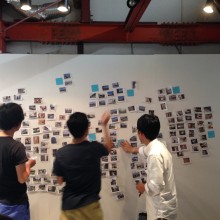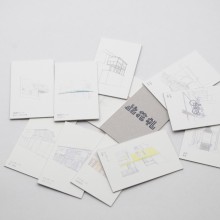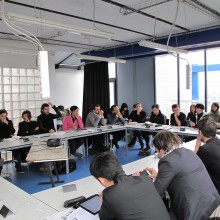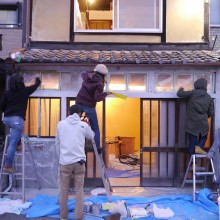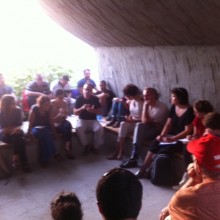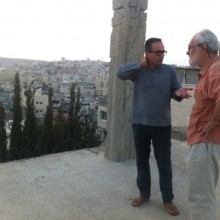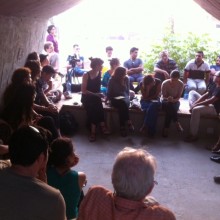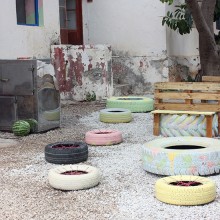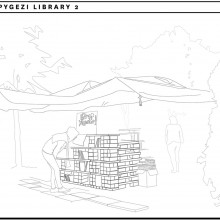‘Architecture After Crisis.’ Pelin Tan
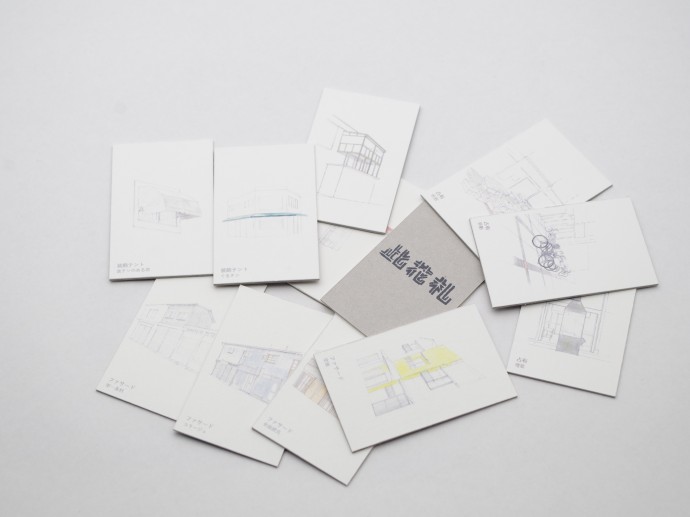
What is our commons and how should it be renewed, sustained, enlarged, drawn down, and/or extended to others?
—J.K. Gibson-Graham
The creation of instituting society, as instituted society, is each time a common world (kosmos koinos), the positing of individuals, of their types, relations and activities; but also the positing of things, their types, relations and signification—all of which are caught up each time in receptacles and frames of reference instituted as common, which make them exist together.
—Cornelius Castoriadis
How can architectural and design practice cope with current economic crisis? Do we consider multiple practices of design ranging from office practice to education and everyday co-existences? Although many architects and designers still base their practices on the office and depend on the neoliberal global market, some are forming collectives that exchange labour as well as creating practices based on a transversal methodology. The economic crisis may empower large-scale offices, but the Occupy movements, their search for alternatives to austerity, and trans-local solidarity networks are opening new paths of practice for design. The Kyoto-based RAD practice (Research for Architecture Domain) describes the need for future architectural practice: ‘The forces of economic crisis that influence the built environment, the difficulties of co-existence of small offices and young architects, the consideration of criticality towards institutional policies and mass architectural mainstream offices are some of the urgent reasons that small offices search for new types of practices.’ Many young architects from different geographies have started to form such research-based collectives that no longer follow usual architectural design practice, instead engaging communities, creating experimental ad hoc design tools, curating exhibitions, running educational workshops at a trans-local level and utilizing a knowledge of architecture to engage with various fields. How can they remain outside a neoliberal creative system that can absorb such practices easily via the comparative advantages to be gained by further exploiting the labour force and new cognitive subjectivities? This remains an important question. It is my guess that safeguarding the ethical and political stances of commoning and continuing to play with the transversal methodology of ad hoc practices that can modify institutions could empower an architecture and design that wanted to create alternatives and remain on the other side.
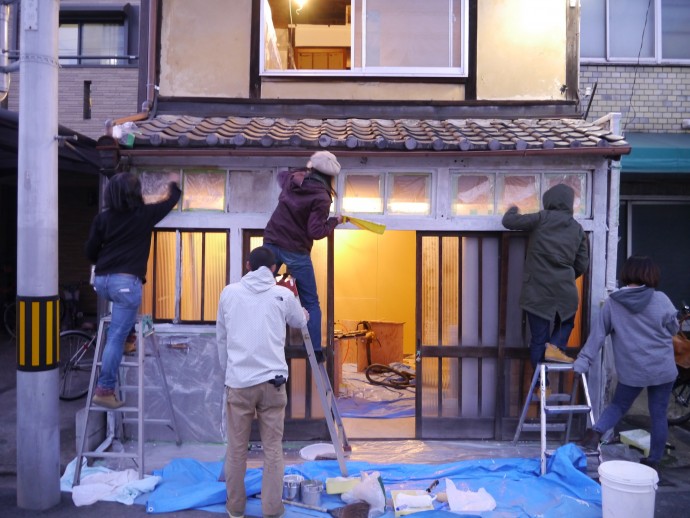
Traceable Renovation Workshop (2013). Courtesy RAD
A transversal methodology would respond to the need to build a common vocabulary relating to labour, pedagogy, commons, archives, institutions and the urban that is connected to our struggle and resistance to conflict in our everyday practices. This need stems from spatial practices in conflicted urban spaces: it is a need not only for a language that relates to the constrained environment of the recent socio-political and economic crisis, but also for a language capable of rebuilding a collective consciousness that can convey our communal coexistence. The question is this: how can self-organized, self-regulating networks and collective structures such as the urban Occupy movements inspire economic models, especially when the generation and redistribution of wealth is involved? And how can the urban spaces in which these networks and structures emerge under exceptional conditions serve as “common knowledge” based on the practice of “commoning”? Nowadays, the discussion is focused on precarious working conditions and their effects on cognitive labour.
Currently, our understanding of the nature of precarious labour is mostly based on a time/work frame that leads to labour exploitation and lack of employment security, but these conditions do not necessarily correspond to our varying experiences of different work types. Rather, precarious labour and conflicts concerning production take on totally different dynamics depending on which autonomous structures and networks they take place in. We can witness some examples of this in different geographies, where autonomous structures and collectives whose labour is based on relational collaboration and self-organization are being actively pursued and developed. There are practical cases of self-organized labour structures managing well on their own, not only to sustain production but also to maintain fluid networks of creative collectivism and collaboration, even though they may be limited to a certain extent by local territorial circumstances. For instance, the RAD architecture collective I mentioned before share a small room with their members in Kyoto, where they realize participatory preservation projects relating to old housing in common with the local communities. This preservation practice not only empowers the local community, it also allows RAD to re-invent ad-hoc preservation methodologies with different materials and common knowledge. In addition, they are involved with other research projects in Europe and other parts of the world; RAD architects can hardly pay their rent but continue their multiple collective practices while individually pursuing different types of design. Most of these groups and networks are involved in urban pedagogy based on the tools of empowerment and self-learning, teaching, acting, research, reclaiming alternative urban space, social media, urban farming and reclaiming citycentres threatened by aggressive real estate development plans. Additionally, they undertake daily activities, collaborating with temporary workers, the homeless and disenfranchised communities to create support structures for these groups. Apart from their autonomous structures, they also try to create criticality models connected to new forms of social relations and commoning.
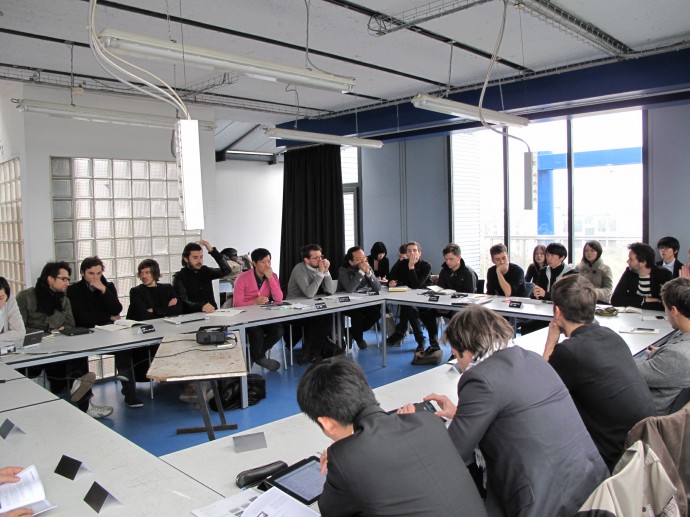
KA2011 – Conference for Japanese and French young architects (2011). Courtesy RAD
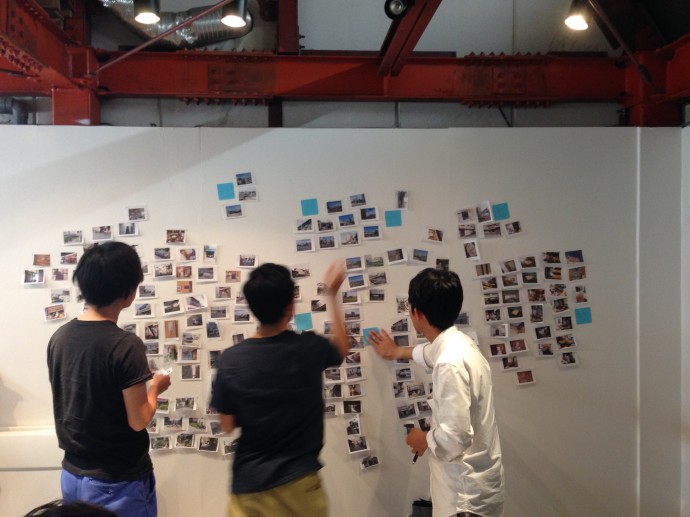
HAPS Workshop , Building Traceability Project. Courtesy RAD
Examples of this can be seen in the organization of discussion groups, collective actions, urban movements and general meetings. From this perspective, their work can be seen as a research method for a practice of commoning—of being in common. I think that what is central to the meaning of “commons” is not what we own or share or produce in terms of property, but rather “social relations” that are closely connected to everyday life. According to political economist Massimo De Angelis: ‘Commons are a means of establishing a new political discourse that builds on and helps to articulate the many existing, often minor, struggles and recognizes their power to overcome capitalist society. He defines three notions in order to explain both commons, in terms of the resources that we share, and a way of commoning—that is, a social process of ‘being common’: the way in which resources are pooled and made available to a group of individuals who then build or rediscover a sense of community.
Food sociologist and activist Raj Patel focuses on the role of food in social movements and the forms of solidarity it underpins,whether that be the Black Panther movements that organized children’s breakfasts or the People’s Grocery or Via Campesina. He defines commons: ‘Commons is about how we manage resources together.’ But his argument is not only about managing and sustaining food growing and sharing, but also about how food-related movements should act in solidarity with other movements. Thus the concept of “commons”, as understood here, holds a sensitive position within any given community or public, especially in contested territories or cities subject to the threat of the neoliberal destruction of their built environment. Negotiation and the resolution of conflicting values are key to such commoning practices. As Stavros Stavrides argues, more than the act or fact of sharing, it is the existence of common grounds for negotiation that is most important. Conceptualizing commons with reference to the public does not focus so much on similarities or commonalities but on exploring the differences between people on a purposefully instituted common ground. We have to establish grounds for negotiation rather than grounds for affirming that which is shared.
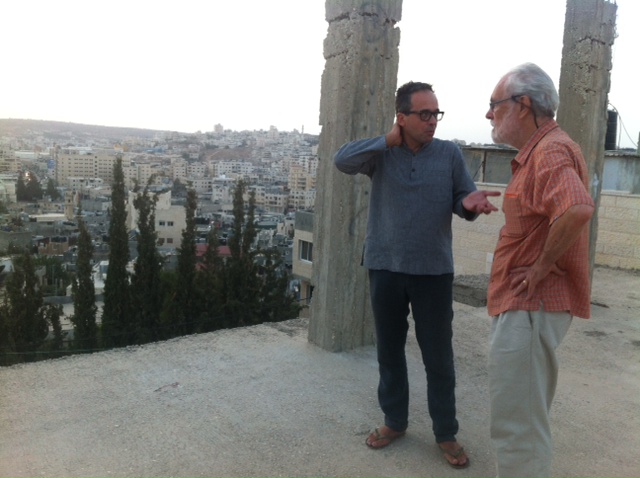
Alessandro Petti and David Harvey at Dheisheh camp. Photo by Pelin Tan, September 2015
In Decolonizing Architecture, ‘Al-Masha’ refers to common land instead of commons: ‘The notion of Al-Masha could help re-imagine the notion of the common today. Could this form of common use be expanded by redefining the meaning of cultivation, moving it from agriculture to other forms of human activity? [...] How to liberate the common from the control of authoritarian regimes, neo-colonialism and consumer societies? How to reactivate common uses beyond the interests of public state control?’ Based in the “occupied territories” of the West Bank, this practice, which draws on the field of architecture, focuses on the reality of Palestinian refugees creating common spaces and perceiving the notion of the “camp” as a potential space beyond neoliberal citizenship and the dichotomy of public versus private space. In the activities of Decolonizing Architecture, the “common” differs from both public and private space. As we can see in most cities and urban spaces, public and private spaces are under the control of governments. Decolonizing Architecture collaborates with different background researchers, refugees, activists and civil representatives in using militant urban and architectural research methodologies to identify common spaces in refugee camps and former military buildings. Working with the inhabitants of Al-Fawwar camp, for example, they designed a small public space which was then realized by young Palestinian refugees and families. A space for the exchange of everyday life experiences and local engagements can be the most important form of resistance against colonization.
Campus in Camps, an educational platform initiated by Decolonizing Architecture and younger-generation Palestinian refugees in Dheisheh Camp, is contributed to internationally and locally by artists, architects and researchers from different fields. The “Concrete Tent” project, a concrete meeting place built with the participation of the camp designed and produced by Campus in Camps, aims to create a communal space for collective learning. Tent also references a collective political past of the Palestinian refugees who settled first in the tents that have now been transformed into concrete buildings. The concept of the tent also presents and preserves the heritage of these camps that are now somehow urbanized. Furthermore, Campus in Camps renders explicit the role of architecture in these communal acts: ‘Architecture is able to register various transformations that make the camp a heritage site. And in camps every single architectural transformation is a political statement. Therefore architecture registers political changes.’ The process in building this concrete tent was interrupted by a family who disagreed with the land-use agreement: ‘After ten days, one member of the large family prevented the labourers from working on the site. The family, the popular committee, and leaders of the camp spent several weeks trying to find a solution. However, this family member stated that, despite the initial agreement to guarantee the collective use of the land for the two coming years, he had now decided to sell it realizing that new attention was being paid to this abandoned land. In a single night all the shelters were demolished.’ After succeeding efforts of the younger generation of Campus in Camps, the tent was constructed again. I think the whole process of conflict in the community is part of the discourse in the camp and preserves it as a continuous decolonizing practice.
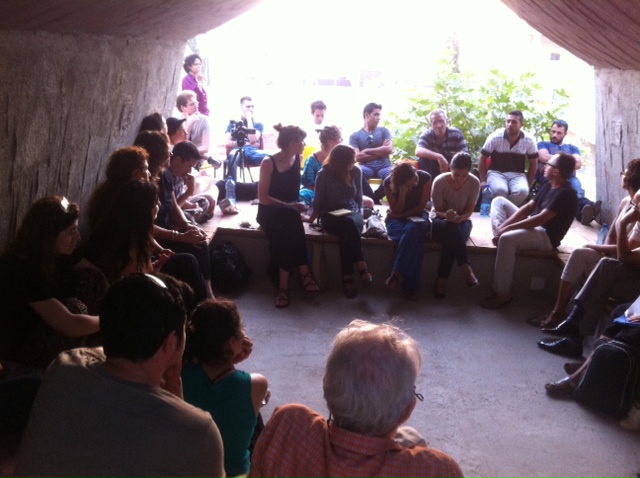
The Concrete Tent. Photo by Pelin Tan, September, 2015.
Another example of commoning practice could be the Istanbul-based collective of many young architects, Architecture for All (HerkesiçinMimarlık), which formed a practice of multiple designs, preservation and formats. Working with local people in villages in Southeast Anatolia to re-design schools with found or cheap materials is one of their practices. Their simple social architecture does involve social empowerment, but as in the case of the Dheisheh camp, their practice is more about creating a new discourse based on different knowledge, labour exchange and ways of commoning.
With reference to the practices of ad hoc and potential instant alliances mentioned above, it is important to consider how the labour exchange strategies applied operate. They are generally based both on immaterial and physical labour, there being no separation between these forms of labour production. Here, the alienating aspects of immaterial labour disappear and the surplus is handled on the basis of ethics rather than capitalist market imperatives. In this context, community economies and surplus dissemination processes, in the sense implied by economist/geography researcher J.K. Gibson-Graham, are of particular importance. For political collective action requires ‘working collaboratively to produce alternative economic organizations and spaces in place.’ Additionally: ‘The “collective” in this context does not suggest the massing together of like subjects, nor should the term “action” imply an efficacy that originates in intentional beings or that is distinct from thought. We are trying for a broad and distributed notion of collective action, in order to recognize and keep open possibilities of connection and development.’
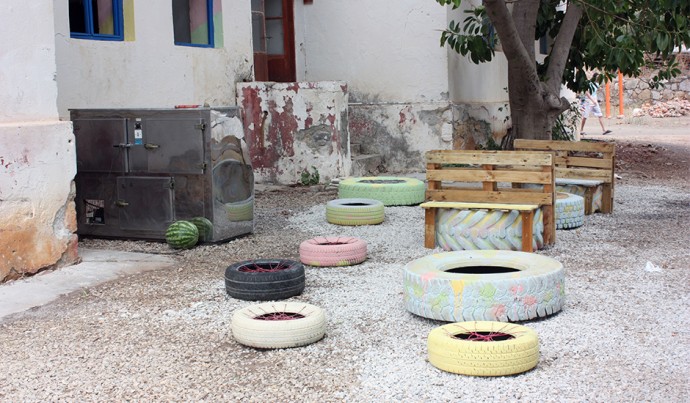
Mesudiye Peyzaj Atölyesi. Source: herkesicinmimarlik.org
In short, collective action requires the ethics of a community economy. In fact, I would articulate this more as an act of ethics of locality that meets the needs suggested by our everyday knowledge and the experience of safeguarding our livelihoods in both urban and rural spaces. The relational network established as a result is more of an instant community that chooses to think and discuss together than it is a normative structure. Self-organization is not a simple hierarchy based on certain labour activities and their division but, conversely, a work/labour structure that allows one to be a farmer in the morning and a graphic designer in the afternoon. To reiterate Stavrides’ astute analysis, collaboration is about negotiation not affirmation. It is about debating critical issues in an urban space, where space itself is a pressing and compelling concern. Creating a collective, non- clerical political action in urban space is not about the organization or the event itself, but about co-existing and functioning together to achieve commoning. This is rooted in a reconsideration and realization of our practices of collaboration, alternative economies, autonomous networks, self-organization and surplus strategies, all of which differ radically from the reality of the neoliberal policies and logics of production currently being forced upon us.
We find ourselves at a stage in global history where local movements consisting of self-organized collectives are attaching themselves to translocal networks capable of creating rhizomatic dissemination and surplus. At the same time, the Occupy movements in different cities have introduced a realm of communal practice of difference that has gathered together pre-existing collective resistance practices. The anti-globalization protests that followed Seattle and continued with the Occupy movements are characterized by unique forms of solidarity, by translocal networks and by various types of transversal knowledge and pedagogy. Architecture for All created architectural drawings of ad-hoc structures in Gezi Park and along the barricades during the Gezi resistance. During the resistance, examples of in situ and instant architecture in Taksim Square and Gezi Park included a temporary mosque, a mobile food collective run using simple materials, and atent which served as an ever-expanding open hospital. Makeshift markers represented the borders of each section, which expanded or contracted according to people’s needs. More often than not, performative architecture is experienced during a”state of emergency”, under conditions of conflictual urbanism, instant architecture and practices of radical spatial resistance. These relational resistance structures led Architecture for All to create the #occupygezi architecture initiative, in which they claim: ‘We need new definitions for architecture in situations when architecture is removed from architects. Each unique structure that we encounter in the streets and Gezi Park has its own in-situ design and implementation process.’
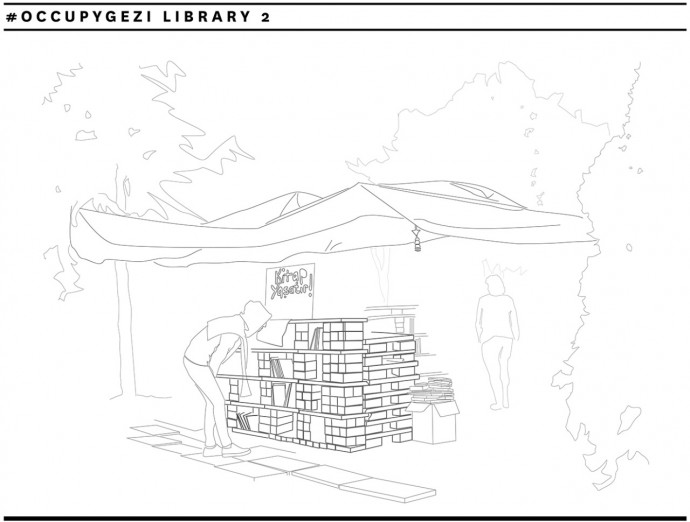
#occupygezi architecture
According to philosopher Simon Critchley, ‘We can talk about Occupy. Occupy is not revolution—it is rebellion—but it is very interesting and it has made a very different set of political tactics available. Occupy is something very familiar to many of the people on the anarchist Left. [...] I believe in a low-level, almost invisible series of actions, which at a certain point reach visibility and then really have an effect. As Gramsci would say, politics is not a war of manoeuver or frontal assault on power. It is a tenacious and long-lasting war of position. This requires optimism, cunning and patience.’
Furthermore, for Franco “Bifo” Berardi, Occupy movements are characterized by taking pleasure in the other body and by an empathy for other alliances. In my opinion, we cannot and do not speak of a new activism anymore; but we do speak about an uncommon knowledge that we create, a new instituting power and a collective labour. This can be linked back to the practice of Decolonizing Architecture and its participants’ intention of questioning the “commons” from the perspective of Al−Masha: the form of research ‘is collective, relational and active.’ In this context, I think concepts such as “participation”, “agonism” and “hegemony”—concepts we often use in practicing radical democracy–are transformed in the process of more layered, conditional and foundational negotiations that question our values, relations and ways of acting in the society of today. The differences between institutional knowledge and its production can be challenged accordingly with a view to creating a co-existence which is at once active and fictive and which touches on everyday and urgent realities. When Decolonizing Architecture describe the ideas behind their actions, they say they seek‘to establish a different balance between withdrawal and engagement, action in the world and research, fiction and proposal.’
In conclusion, the main dilemma faced is how to develop and sustain ad-hoc practices that are based on heterogeneous economics, ways of commoning, collective ethics of collaboration and action labour against economic austerity and its political discourse? The concept and practice of commons and communing need more detailed analyses of political struggle, its history and the relative conceptualization of different geographies, bothwithin and beyond the EU and in different conditions of labour/surplus production. Architectural and design practice that is deeply but partially rooted in capitalist labour exploitation and market-based surplus dissemination could bring its own emancipative practice with its own design methodologies. Conflict and agonism would be parts of this practice in local co-existences.
—Pelin Tan, sociologist and art historian. Associate professor at the Architecture Faculty, Mardin Artuklu University, Turkey.
/// This text was first published in the e-Book Adhocracy READER (dpr-barcelona and the Onassis Cultural Center, 2015).
/// By permission of the author and the publisher, we reproduced it here. You can freely download the complete e-Book, following this link.
